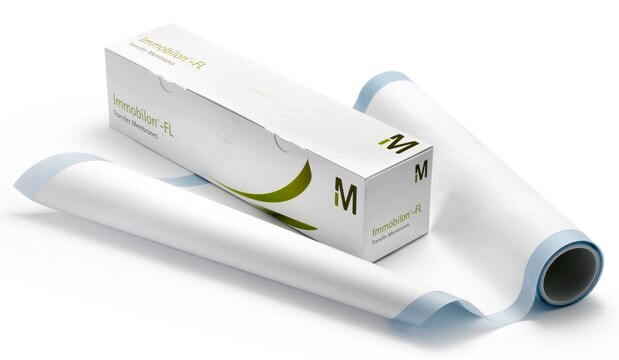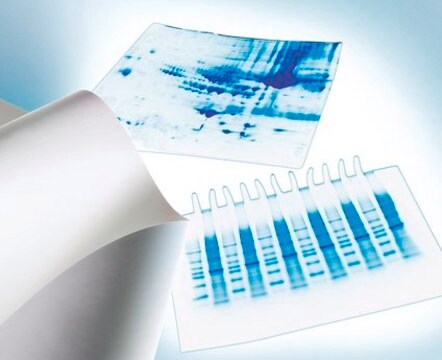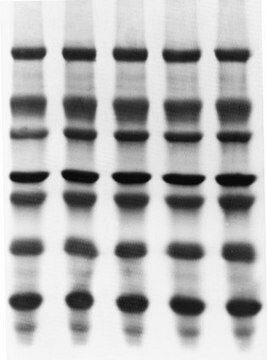MABF2069
Anti-Glucuronoxylomannan (GXM) Antibody, clone 18B7
clone 18B7, from mouse
Sinónimos:
GXM
About This Item
Productos recomendados
biological source
mouse
Quality Level
antibody form
purified immunoglobulin
antibody product type
primary antibodies
clone
18B7, monoclonal
species reactivity
mouse
technique(s)
ELISA: suitable
immunocytochemistry: suitable
immunodepletion: suitable
immunofluorescence: suitable
immunohistochemistry: suitable (paraffin)
isotype
IgG1κ
shipped in
ambient
target post-translational modification
unmodified
General description
Specificity
Immunogen
Application
Immunodepletion Analysis: A representative lot immunodepleted Glucuronoxylomannan (GXM) in Immunodepletion applications (Lendvai, N., et. al. (1999). J Infect Dis. 180(3):791-801; Casadevall, A., et. al. (1998). Antimicrob Agents Chemother. 42(6):1437-46; Martinez, L.R., et. al. (2004). Infect Immun. 72(6):3674-9; Bowen, A., et. al. (2017). J Biol Chem. 292(2):417-434).
Immunofluorescence Analysis: A representative lot detected Glucuronoxylomannan (GXM) in Immunofluorescence applications (Casadevall, A., et. al. (1998). Antimicrob Agents Chemother. 42(6):1437-46; Bowen, A., et. al. (2017). J Biol Chem. 292(2):417-434).
Immunocytochemistry Analysis: A 1:1,000 dilution from a representative lot detected Glucuronoxylomannan (GXM) in heat killed cryptococcus cells.
Immunohistochemistry Analysis: A 1:50-250 dilution from a representative lot detected Glucuronoxylomannan (GXM) in S. neoformans-infected mouse spleen, mouse lung, mouse liver, and mouse brain tissues.
ELISA Analysis: A representative lot detected Glucuronoxylomannan (GXM) in ELISA applications (Casadevall, A., et. al. (1998). Antimicrob Agents Chemother. 42(6):1437-46; Martinez, L.R., et. al. (2004). Infect Immun. 72(6):3674-9; Bowen, A., et. al. (2017). J Biol Chem. 292(2):417-434).
Inflammation & Immunology
Quality
Isotyping Analysis: The identity of this monoclonal antibody is confirmed by isotyping test to be mouse IgG1 .
Physical form
Storage and Stability
Other Notes
Disclaimer
¿No encuentra el producto adecuado?
Pruebe nuestro Herramienta de selección de productos.
Storage Class
12 - Non Combustible Liquids
wgk_germany
WGK 2
Certificados de análisis (COA)
Busque Certificados de análisis (COA) introduciendo el número de lote del producto. Los números de lote se encuentran en la etiqueta del producto después de las palabras «Lot» o «Batch»
¿Ya tiene este producto?
Encuentre la documentación para los productos que ha comprado recientemente en la Biblioteca de documentos.
Nuestro equipo de científicos tiene experiencia en todas las áreas de investigación: Ciencias de la vida, Ciencia de los materiales, Síntesis química, Cromatografía, Analítica y muchas otras.
Póngase en contacto con el Servicio técnico







